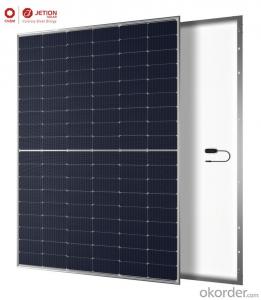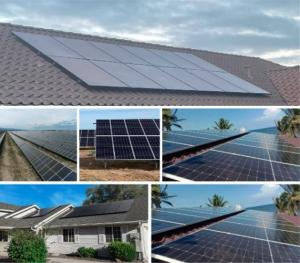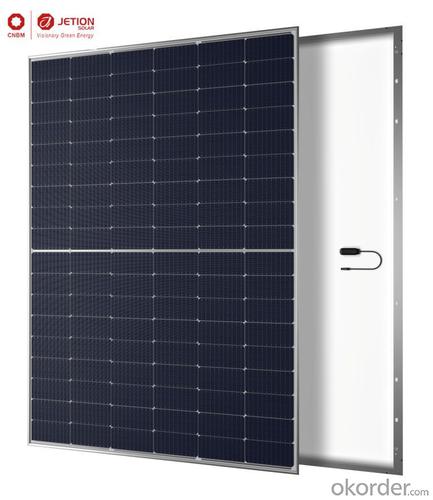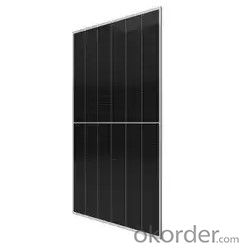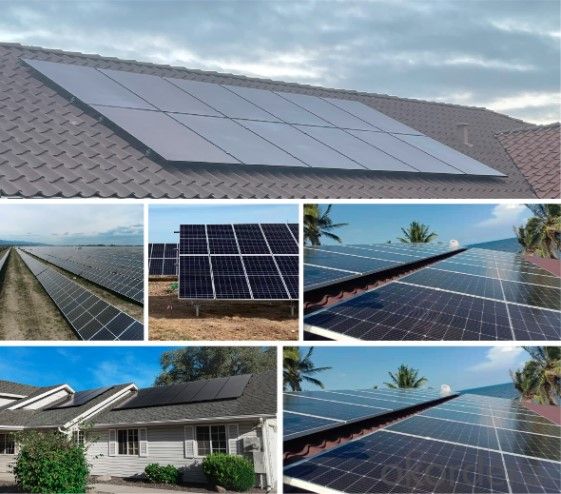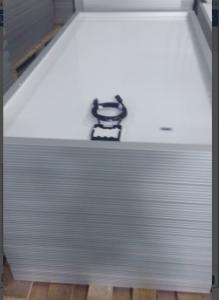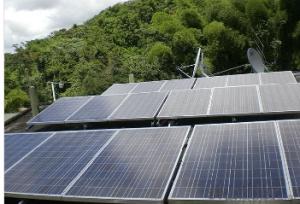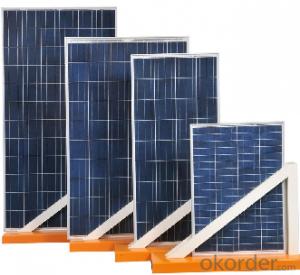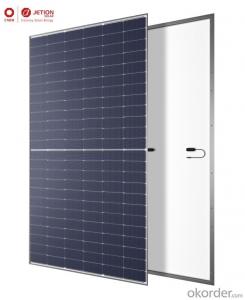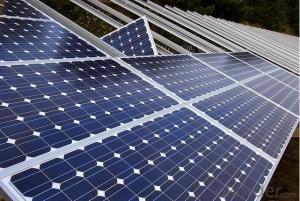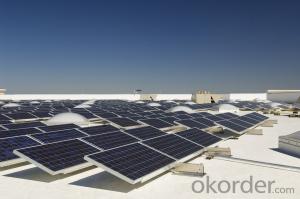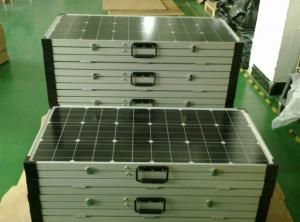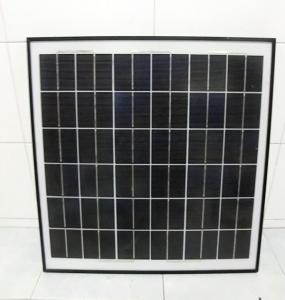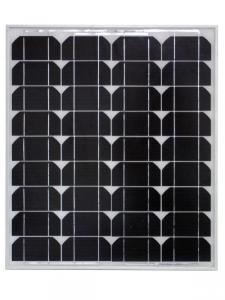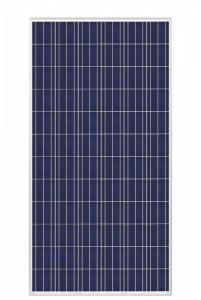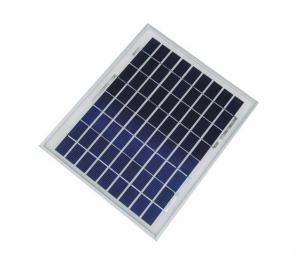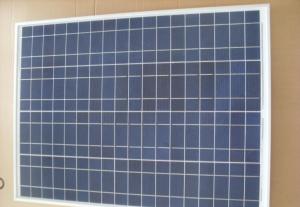Oakland Solar Panels - Factory Wholesale High Efficiency 395-415w Solar Panels with 30 Years Warranty NCQ
- Loading Port:
- SHANGHAI
- Payment Terms:
- TT OR LC
- Min Order Qty:
- 5 pc
- Supply Capability:
- 100 pc/month
OKorder Service Pledge
OKorder Financial Service
You Might Also Like
Specification
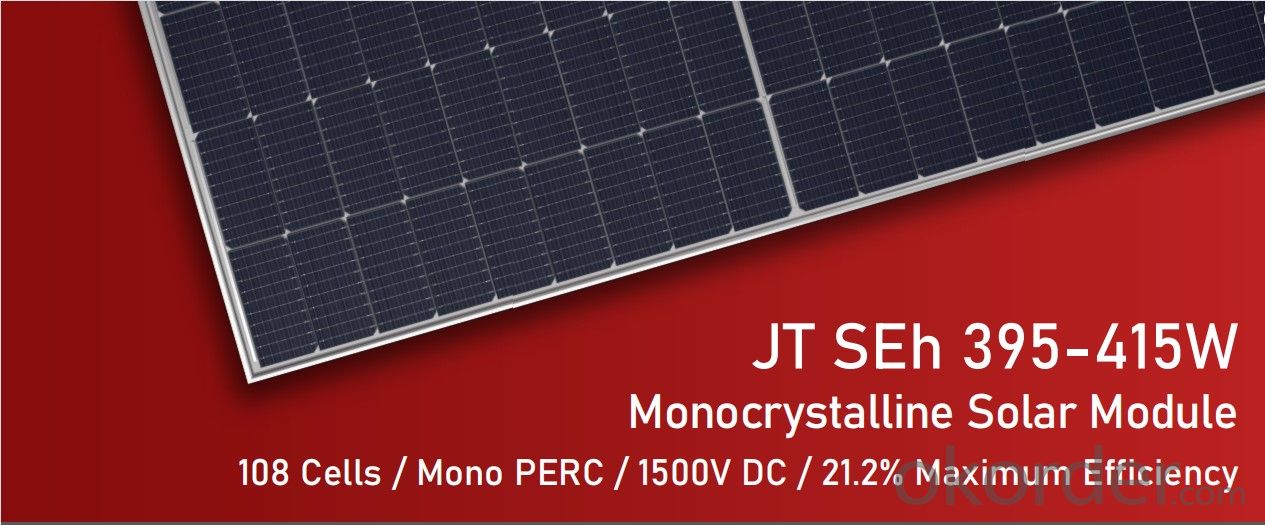
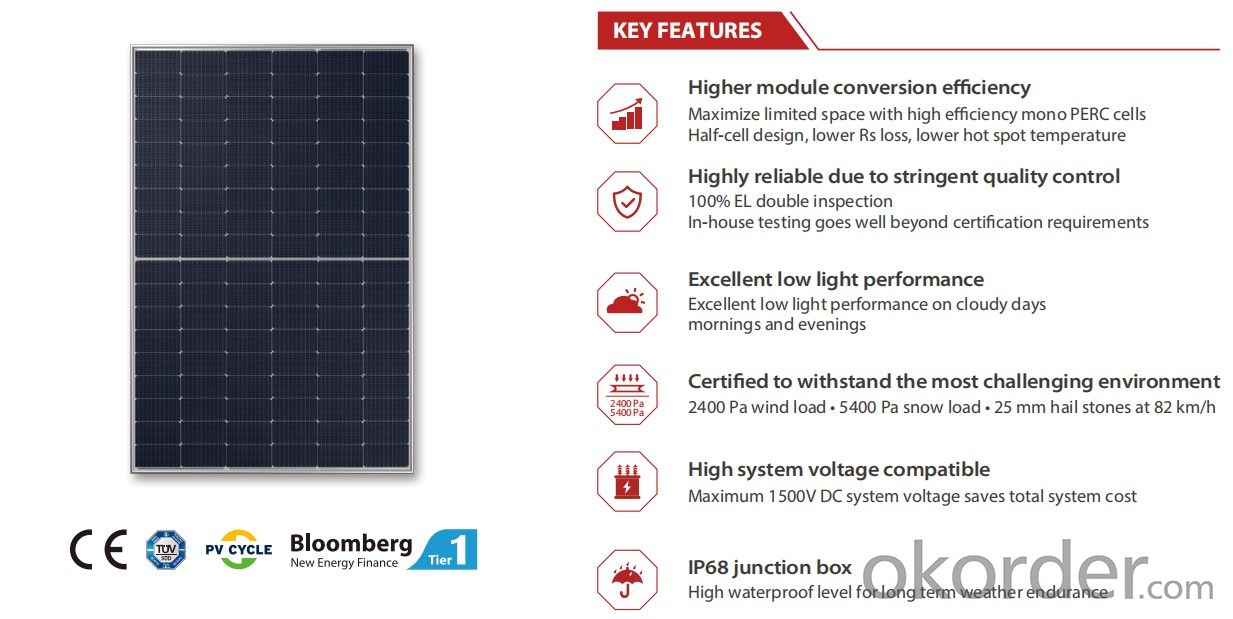
ELECTRICAL DATA*STC
TYPE(Tolerance:0-+5W) | JT395 SEh | JT400 SEh | JT405 SEh | JT410 SEh | JT415 SEh |
Maximum Power Pmax (W) | 395 | 400 | 405 | 410 | 415 |
Maximum Power Voltage Vmp (V) | 30.7 | 30.9 | 31.1 | 31.3 | 31.5 |
Maximum Power Current Imp (A | 12.87 | 12.95 | 13.03 | 13.10 | 13.18 |
Open Circuit Voltage Voc (V) | 36.8 | 37.0 | 37.2 | 37.4 | 37.6 |
Short Circuit Current Isc (A) | 13.72 | 13.80 | 13.88 | 13.95 | 14.03 |
Module Effciency (%) | 20.2% | 20.4% | 20.7% | 21.0% | 21.2% |
STC: Irradiance 1000W/m², Cell Temperature 25°C, Air Mass AM1.5
Measuring tolerance: :±3%
ELECTRICAL DATA *NMOT
Maximum Power Pmax (W) | 298.65 | 302.47 | 306.31 | 310.17 | 314.06 |
Maximum Power Voltage Vmp (V) | 28.8 | 29.0 | 29.2 | 29.4 | 29.6 |
Maximum Power Current Imp (A | 10.37 | 10.43 | 10.49 | 10.55 | 10.61 |
Open Circuit Voltage Voc (V) | 34.5 | 34.7 | 34.9 | 35.1 | 35.3 |
Short Circuit Current Isc (A) | 11.06 | 11.12 | 11.18 | 11.24 | 11.30 |
NMOT: lrradiance at 800W/m², Ambient Temperature 20℃, Wind Speed 1m/s
MECHANICAL DATA
Solar Cell Type | Mono 91x182 mm(3.6x7.2 inches) |
Number of Cells | 108[2 x(9 x 6)] |
Module Dimensions | 1722*1134*30 mm(67.8*44.6*1.2 inches) |
Weight | 20.5 kg(45.2 lb) |
Front Cover | 3.2 mm (0.13 inches), high transmission, AR coated tempered glass |
Back Cover | White composite film |
Frame | Silver, anodized aluminium alloy |
J-Box | ≥IP68 |
Cable | 4.0 mm² solar cable, 300 mm(11.8 inches) |
Number of diodes | 3 |
QUALIFICATIONS & CERTIFICATES
v IEC 61215,IEC 61730, IEC 62941
v ISO 9001: Quality Management System
v ISO 14001: Environment Management System
v ISO 45001: Occupational Health and Safety
JETION SOLAR
As a member of CNBM - a Fortune 500 company, Jetion Solar provides various product solutions,global EPC service and financing. lts standard and high-efficiency product offerings are among the most powerful and cost-effective in the industry. Till now, Jetion Solar has cumulatively more than 10 GW module shipment and 1 GW global EPC track records.
FAQ
1.how can we guarantee quality?
Always a pre-production sample before mass production;
Always final Inspection before shipment;
2.what can you buy from us?
Inverter, Solar Panels, Solar Panels Brackets, Lithium Battery
3.why should you buy from us not from other suppliers?
CNBM is a group company with skillful technical team. With First class pre - and after - sales service. We also are agent of HUAWEI inverter, Longi Solar Jinko solar and so on. The solar products will supply you with under market price.
4.what services can we provide?
Accepted Delivery Terms: FOB,CFR,CIF,EXW,FCA;
Accepted Payment Currency:USD,EUR,HKD,CNY;
Accepted Payment Type: T/T,L/C,D/P D/A,Credit Card,PayPal,Western Union;
Language Spoken:English,Spanish,German,French,Arabic
- Q: My hubby and I are waiting to move in to our camper but have to figure out how many solar panels, batteries, etc. to get. I can't find the info per appliance for Watts and amps, but does anyone have a good, general idea of how many Watts it'd take to run the whole shabang? It's a 999, 25-foot Sportsmen tag-a-long, if that helps..It's got the following, and we'd like to run the propane things off of electric:*Refrigerator/freezer*Microwave*Oven/stove*AC/Heat*Will have a tv, phone chargers, laptop charger, but those will be unplugged when not in useThanks so much! It's such a headache.. You get SO MUCH different info from different places.. OI..
- Running an oven or stove on solar is not a practicality; too much power is needed, use gas. Ditto, heating using solar electricity is not a practicality, and AC would also be asking a lot. The other things, within limits, might be do-able. You'll be needing as many solar panels as you can fit on. If I was you I'd consult a solar installer about how big your battery bank should be once you have decided how many Watts of panels you can put on.
- Q: I have a small marine solar panel on my boat It came with the boat. I want to make sure it is working before I connect it. With a volt meter It is only reading .2 volts dc. I would think it should be 2-5 volts?
- If it's only reading 0.2 volts, then the panel is burned out. What you can do is look for a nameplate on the panel, then try to look it up on the internet. Hopefully that will say what the voltage is supposed to be. You are right in that a panel intended to charge a 2-volt battery should read about 8 volts open circuit out in daylight, even if it isn't pointing straight at the sun. Is it a flexible rubber panel? Those are notorious for dying after just a couple years.
- Q: Can solar panels be installed on wearable devices?
- Yes, solar panels can be installed on wearable devices. However, due to the limited surface area available on wearables, the amount of energy generated may be relatively low compared to larger solar installations. Additionally, the efficiency of such panels may vary based on the device's orientation to the sun. Nonetheless, incorporating solar panels on wearables can contribute to extending battery life and enhancing their overall sustainability.
- Q: Which kit did you use?How easy was it to build? How much did it cost to build the panels?How many kw or watts does it produce?Any other info on the kit or panels you built would be helpful.Thanks!
- I okorder The cost of a solar panel goes up as the power or wattage does. It takes more cells to generate more watts. We are building a Solar Power Concentrator to focus more sunlight onto our solar panels.
- Q: We've been considering solar panels for a while now, and we'd like to know a little more about them. Please answer to the best of your knowledge. Thanks.
- I have had my system for almost a year and love it. I got a 3.74 kwh/dc system, my highest electric bill was $35 in the dead of winter and last month was $6.. I paid $6K for the system and was told I would break even in my 6th year, that was factoring in a 5% annual rate increase. In my area the last few rate increased have been well over 5% and they are talking up to 2% next year. Just keep in mind the amount of energy you use will determine how large of a system will work best for you. My system is tied to the grid, so I don't need a storage system. My utility has net metering, so I sell them my excess during the day and buy back what I need at night.
- Q: what kind of rays are used in solar panels?
- Electromagnetic...meaning light rays, primarily in the visible spectrum. Ultraviolet and infrared light rays actually degrade most types of solar panels, limiting their useful lifetime. That said, your question is not stated well...so I'm not sure if that's the information you were looking for. Rays are not used in solar panels...rather solar panels are used to collect sunlight and convert it to energy--either directly into heat in the case of passive solar, or into electricity by the use of photovoltaic cells.
- Q: Can solar panels be used to power streetlights or outdoor lighting?
- Yes, solar panels can be used to power streetlights or outdoor lighting. Solar-powered streetlights or outdoor lighting systems consist of solar panels that capture sunlight and convert it into electricity, which is stored in batteries. This stored energy is then used to power the streetlights or outdoor lighting during the night or when there is insufficient sunlight. Solar-powered streetlights offer a sustainable and cost-effective solution for outdoor lighting, reducing energy consumption and carbon emissions.
- Q: Can I add reflectors or mirrors around the solar panels to increase the power they generate?
- You could (an example of concentrating sunlight is called cloud gain, where the edge of a cloud will intensify sunlight as it passes between the sun and your panels), but that will make your panels run hotter and will probably reduce their life. It's better from a system design standpoint to simply get another panel or two. DK
- Q: Can solar panels be installed on a university or college campus?
- Yes, solar panels can be installed on a university or college campus. In fact, many educational institutions have already embraced solar energy as a way to reduce their carbon footprint and promote sustainability. Installing solar panels on campus buildings can provide clean, renewable energy, reduce electricity costs, and serve as an educational tool for students to learn about renewable energy technologies.
- Q: How many solar panels have ah?
- Classification of solar cells: Currently on the market of solar cells into amorphous silicon and crystalline silicon. Crystalline silicon can be divided into polysilicon and monocrystalline silicon. From the photoelectric conversion efficiency of the three materials is: monocrystalline silicon (up to 17%)> polysilicon (12 ~ 15%)> amorphous silicon (about 5%).
Send your message to us
Oakland Solar Panels - Factory Wholesale High Efficiency 395-415w Solar Panels with 30 Years Warranty NCQ
- Loading Port:
- SHANGHAI
- Payment Terms:
- TT OR LC
- Min Order Qty:
- 5 pc
- Supply Capability:
- 100 pc/month
OKorder Service Pledge
OKorder Financial Service
Similar products
Hot products
Hot Searches
Related keywords
